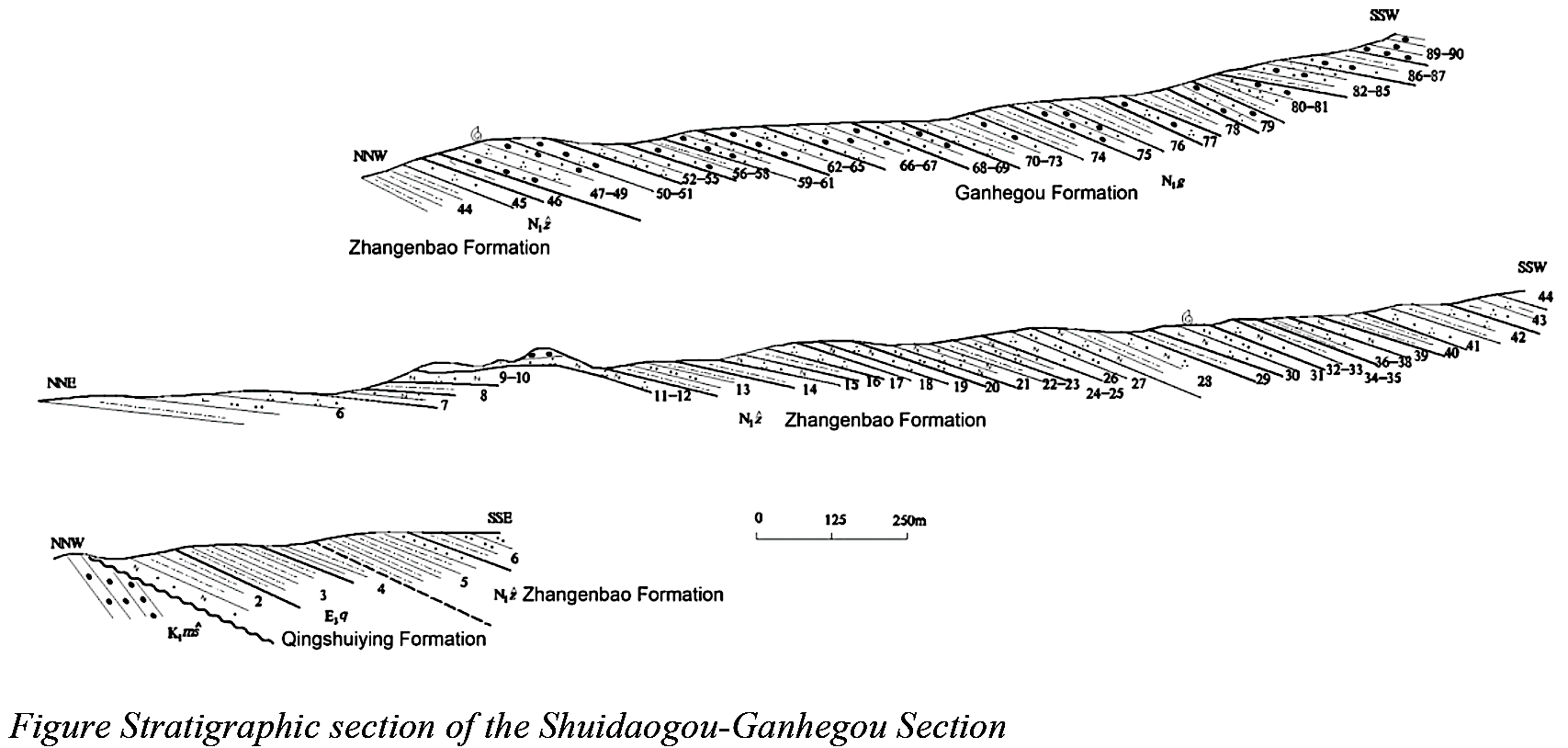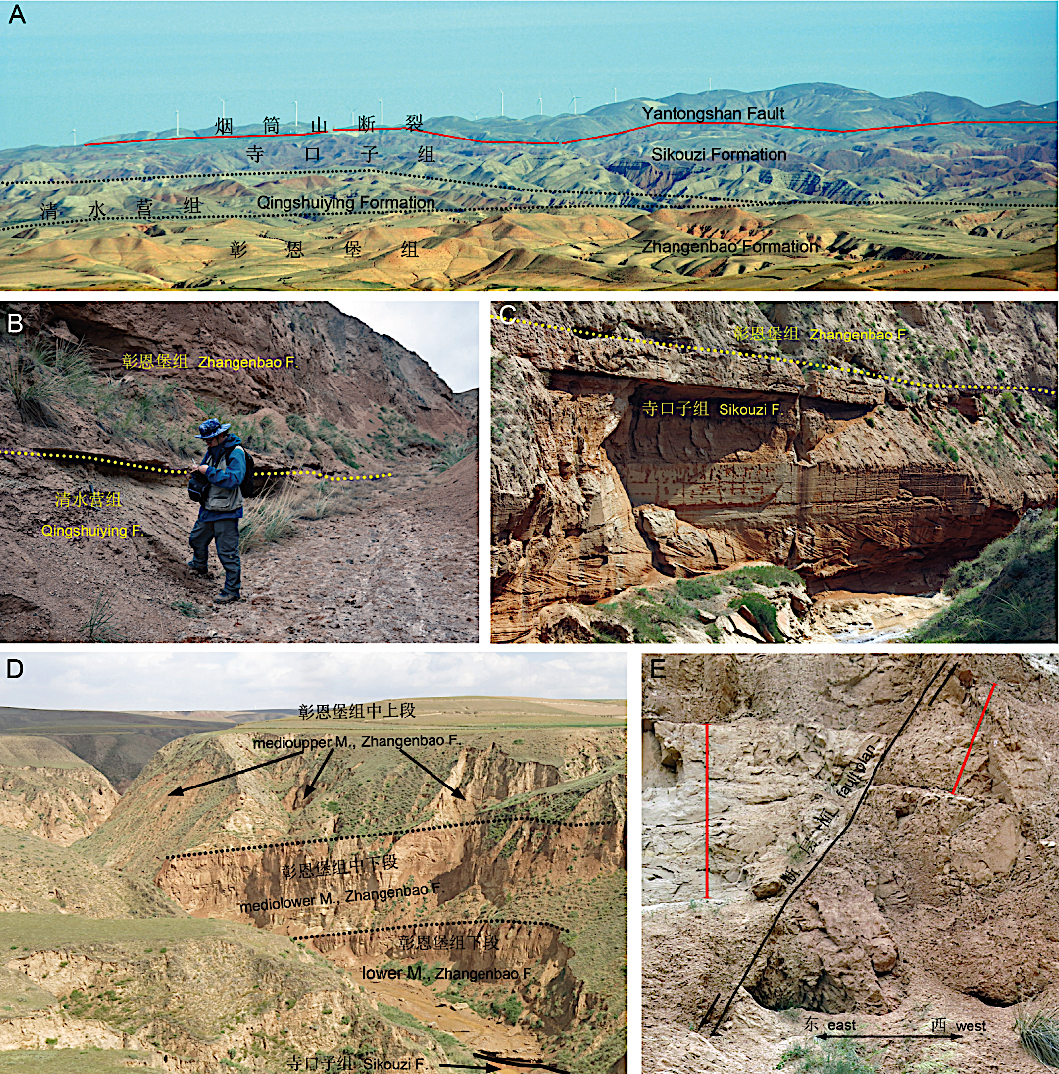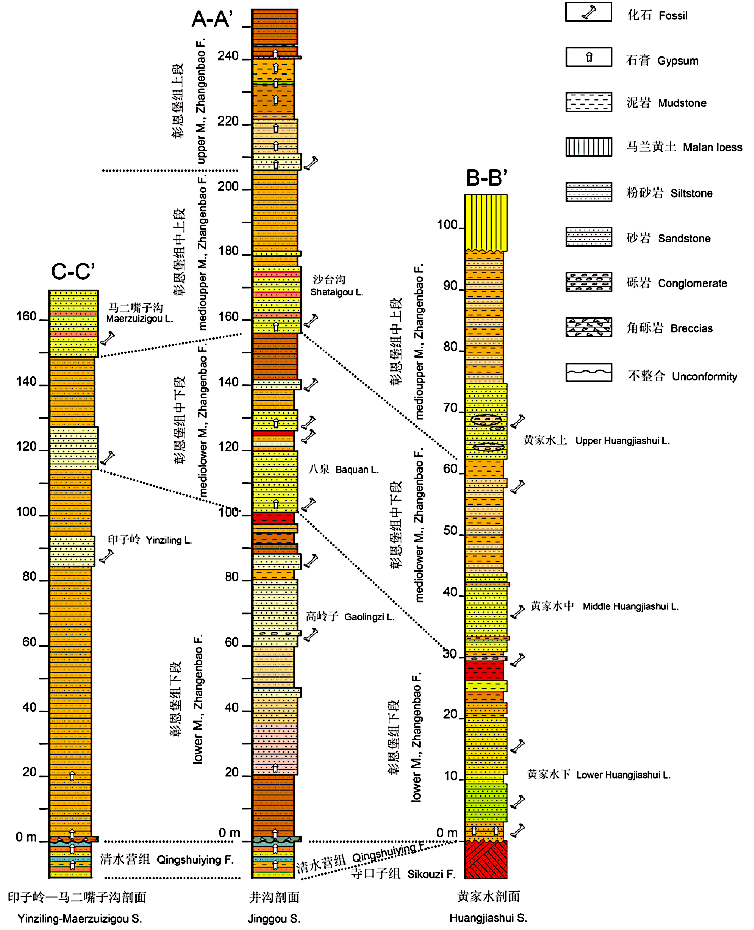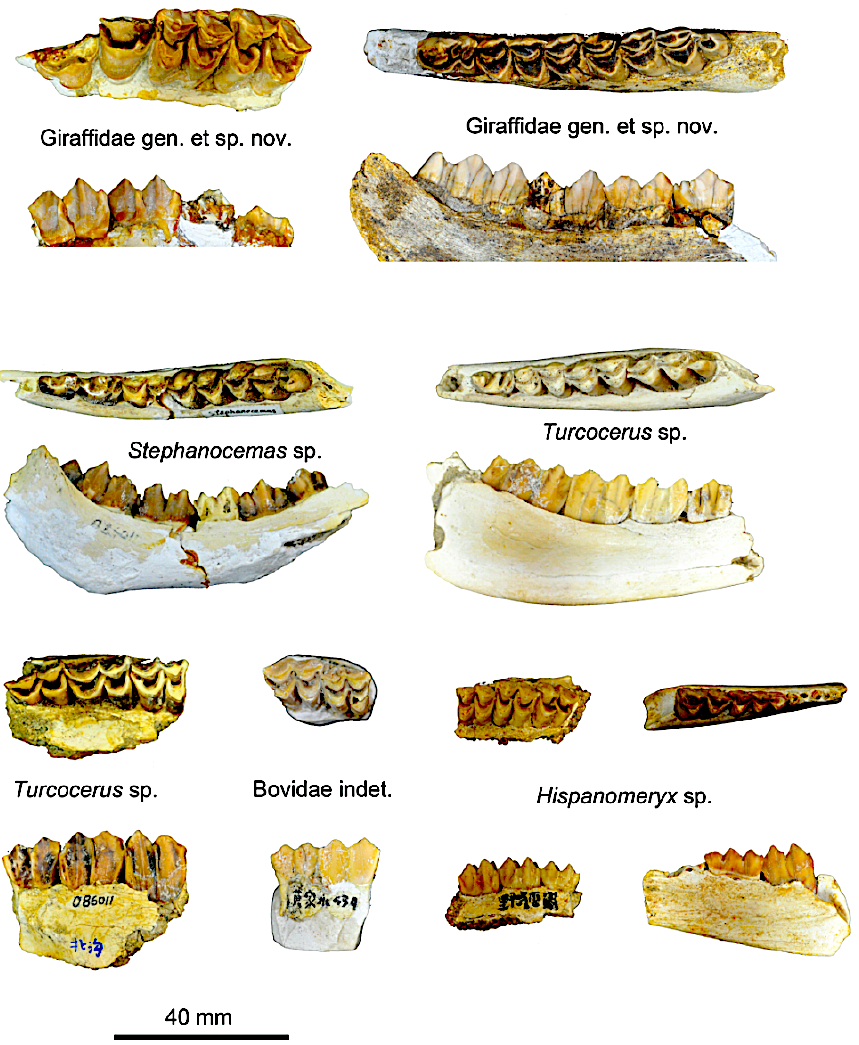Zhangenbao Fm
Type Locality and Naming
Liupanshan-Helanshan region. The type section, Shuidaogou–Ganhegou section, the same as the type section of Ganhegou Formation, is located at the Holiugou, 8 km northest of the Baima Township, Zhongning County, Zhongwei City. It is located 35 km northeast of the Zhongning County, 35 km southwest of the Wuzhong City. Geographical coordinates: 37°41′59.9”N, 105°58′43.61″E(GPS). It was originally named Hongliugou Formation by the Third Regional Survey Party, Ningxia Bureau of Geology in 1976, and was renamed as Zhangenbao Formation in 1999, due to the junior synonymous of the Upper Silurian Hongliugou Formation in the Xinjiang Uygur Autonomous Region.
[Figure: Geological map of the Dingjiaergou—Huangjiashui area, mainly showing the Zhangenbao Formation.]
Lithology and Thickness
A sequence of fluvio-lacustrine clay, sandstone and conglomerate. The lithology and thickness vary greatly. In the vicinity of Hongliugou, Zhongning, the lower part consists of orange-red and orange-yellow sandy clay with grayish white quartz sandstone and some grayish green clay bands, and the upper part is composed of soil-red, sandy clay with grayish white quartz sandstone and conglomerate lenses, the thickness of the formation being ~700 m. In the vicinity of Guyuankouzi this formation is represented by alternating beds of purplish red, silty mudstone and orange-yellow siltstone, with grayish green gypseous sandstone, the base of which is a bed of grayish white, pebbly sandstone, the thickness being 963 m. In the vicinity of Tongxin, the most typical area of the Zhangenbao Formation, it consists of alternating beds of brownish red and orange-red mudstone and grayish white and yellow quartz sandstone with abundance of fossil mammals, and the thickness is ~165–200 m.
[Figure: Photographs showing the outcrops of the Zhangenbao Formation. A, the distribution of geological units in the studying area, view toward northeast, showing the southward gradual pinching of the Qingshuiying Fm; B, the parallel unconformity of the overlying Zhangenbao Fm and the underlying Qingshuiying Fm, at the base of the Jinggou Section; C, the parallel unconformity of the overlying Zhangenbao Fm and the underlying Sikouzi Fm, in the Huangjiashui drainage; D, the photograph of the Huangjiashui section, showing three sedimentary cycles of sandstone–mudstone; E, a fault in the strata.]
[Figure: Correlation of section histograms of the Zhangenbao Formation in the study area. The positions of A-A’, B-B’, and C-C’ are marked in the map figure.
Relationships and Distribution
Lower contact
It unconformably overlies the Oligocene Qingshuiying Fm. In the Huangjiashui section, it directly unconformably overlies the Eocene Sikouzi Fm.
Upper contact
It underlies the late Miocene Ganhegou Fm with an angular disconformity of a ~1-2 Ma hiatus.
Regional extent
It is distributed in the south part of the Ningxia Hui Autonomous Region
GeoJSON
Fossils
Mammalian fossils was very abundant in the Dingjiaergou Huajiashui area. It should be separated into the lower and upper assemblages. Lower assemblage: Perissodactyla: Anchitherium gobiensis, Diaceratherium sp., Aceraterinae indet., Elasmotherinae indet. Artiodactyla: Bunolistriodon sp., Kubanochoerus sp., Giraffidae: Giraffidae gen. et sp. nov. Cervidae: Stephanocemas sp., Lagomeryx complicidens, Moschidae: Hispanomeryx sp., Micromeryx sp. Bovidae: Turcocerus sp. Proboscidea: Protanancus wimani, Gomphotherium cooperi, Choerolophodon sp., Miomastodon tongxinensis; Carnivora: Amphicyon zhanxiangi, Amphicyon sp., Gobicyon zhegalloi, Gobicyon yei, Plithocyon aff. Stehlini, Hyaenidae gen. et sp. nov; Upper assemblage: Cervidae: Stephanocemas sp., Lagomeryx tsaidamensis; Proboscidea: Platybelodon grangeri Aphanobelodon zhaoi, Miomastodon tongxinensis; Giraffidae: Giraffidae gen. et sp. nov. Bovidae: Turcocerus sp. Moschidae: Hispanomeryx sp., Micromeryx sp. Carnivora: Gobicyon macrognathus, Percrocuta miocenica, Tongxinictis primordialis
[Figure: fossil mammals from the Zhangenbao Formation.
Age
Depositional setting
Alluvial fans deposits and fluvio-lacustrine deposits
Additional Information




